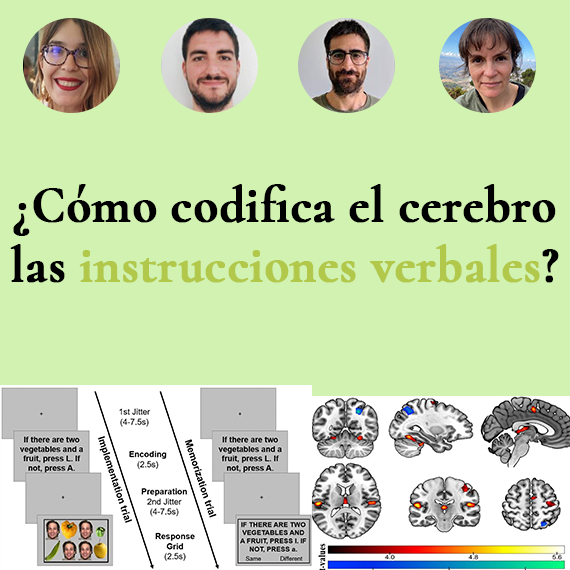

How does the brain encode verbal instructions?
The use of verbal instructions allows us to incorporate novel behaviors in a quick and flexible way. Previous results have shown that different variables related to cognitive control shape neural activity in frontoparietal regions during the encoding of novel instructed tasks.
In this study, Alberto Sobrado, Ana F. Palenciano, Carlos González-García and María Ruz, CIMCYC researchers, investigated whether the neural encoding of these task-relevant variables (stimulus dimensions’ integration, response complexity and stimulus target category) is modulated by implementation and memorization demands of the content of the instructions.
To do so, they combined functional Magnetic Resonance Imaging (fMRI), an instruction-following paradigm, and multivariate analyses. 37 students from the University of Granada read a series of novel verbal instructions, which were then executed (implementation) or remembered (memorisation). In the implementation task, participants had to respond to a set of stimuli following the instructions. In the memorization task, the students saw a second instruction and they had to identify if it was identical or different from the one encoded in the first place. With this manipulation, the authors addressed how and where distributed activity patterns encoded instructions’ variables, as well as the impact of implementation and memorization demands on the fidelity of these representations.
The results revealed, on the one hand, that the content of the implemented and memorized instructions is represented in common brain regions, flexibly using a common neural code across tasks. On the other hand, the results also suggest that preparing to implement the instructions optimize the encoding of task-relevant information in frontoparietal areas, in comparison with memorization demands.
In conclusion, this research suggests that representing task attributes based on generalizable code, together with the increase in encoding fidelity induced by implementation demands, could be key mechanisms for proactive control in novel scenarios.
Full reference
Sobrado, A., Palenciano, A. F., González-García, C., & Ruz, M. (2022). The effect of task demands on neural patterns generated by encoding novel instructions. Cortex, 149, 59–72. https://doi.org/10.1016/j.cortex.2022.01.010
Contact
-Ana F. Palenciano: palencianoap@ugr.es
-María Ruz Cámara: mruz@ugr.es

